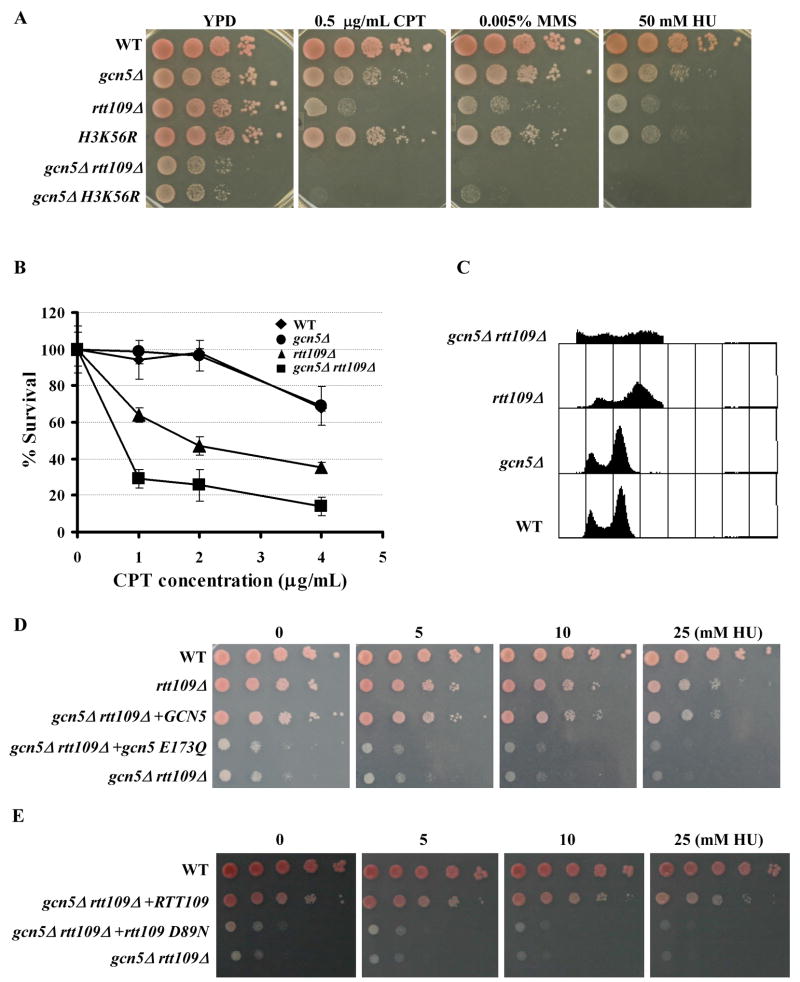Figure 1.
Gcn5 and H3 lysine 56 acetylation function in parallel in growth and response to DNA damaging agents. Data presented in Table S1 indicate the presence of synthetic genetic interactions between the HAT, GCN5, and ASF1, a regulator of H3K56Ac. (A) The gcn5Δ mutant exhibits synthetic phenotypes with rtt109Δ and H3K56R mutants. Ten fold serial dilutions of wild-type (WT) or mutant yeast cells with relevant genotype indicated were spotted onto normal growth media, YPD, or media containing the indicated concentration of the DNA damaging agents hydroxyurea (HU), methyl methane sulfonate (MMS), or camptothecin (CPT). Full data presented in Figure S1. (B) The gcn5Δ rtt109Δ double mutant cells are more sensitive to CPT than either single mutant. Yeast cells were treated with the indicated concentration of CPT for 2 hours, and the percentage of surviving cells was reported. (C) FACS analysis of the DNA content of unsynchronized yeast cells. (D–E) The catalytic activity of Gcn5 (D) and Rtt109 (E) is required for cell growth and sensitivity towards DNA damaging agents. Mutant cells transformed with either plasmid for wild-type GCN5, gcn5 E173Q, or empty vector (gcn5Δ rtt109Δ) were spotted onto media containing different concentrations of HU (D). Similar experiments were also performed for wild-type RTT109 or the rtt109 D89N (E).

